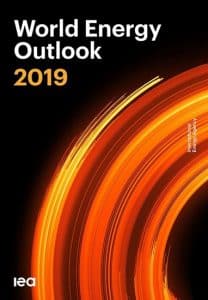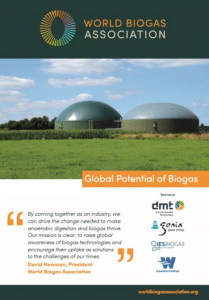
World Energy report calls on governments to boost biomethane production
 A “Special Focus” on gas infrastructure and the role of biomethane is included in the influential World Energy Outlook (WEO) report, issued by the International Energy Agency yesterday (November 13).
A “Special Focus” on gas infrastructure and the role of biomethane is included in the influential World Energy Outlook (WEO) report, issued by the International Energy Agency yesterday (November 13).
Low carbon gases – biomethane and green hydrogen – are highlighted as well-established gas grids are readily available, flexible and can deliver twice as much energy as electricity grids today.
“Decisions on the future of gas networks need to consider their potential to deliver different types of gas in a low emissions future, as well as their role in ensuring energy security,” the report states.
“Questions about the relative importance, and respective roles, of electricity and gas networks are central to the design of energy transitions. Low-carbon electricity has huge potential to play a greater direct role in future energy systems, but there are limits to how quickly and extensively electrification can occur.
“Well-established gas grids can deliver twice as much energy as electricity grids today and they are a major source of flexibility.”
Biomethane production 2040
Looking ahead to 2040 the report states, “In the Sustainable Development Scenario, biomethane use rises to over 200 Mtoe (mega tonnes of oil equivalent) in 2040, and more than 25 Mtoe of low-carbon hydrogen is injected into gas networks.
“Low-carbon gases make up 7% of total gas supply globally in 2040 – and is on a steep upward trajectory. Over 15% of total gas supply in China and the European Union is low-carbon gas in 2040.
“Globally low-carbon hydrogen and biomethane blended into the gas grid in the SDS avoid around 500 million tonnes (Mt) of annual CO2 emissions that would have occurred in 2040 if natural gas had been used instead.”
 This chimes with the findings of the World Biogas Association report The Global Potential of Biogas, released in July, which is referenced as a source in the WEO report and was endorsed by the IEA on release.
This chimes with the findings of the World Biogas Association report The Global Potential of Biogas, released in July, which is referenced as a source in the WEO report and was endorsed by the IEA on release.
Whereas biomethane is ready to go and compatible with natural gas grids, the same isn’t the case for green hydrogen, the use of which in many countries is currently restricted to 2% blending. Hence biomethane has to take the strain in the immediate decades ahead to deliver the Sustainable Development Scenario.
Ambitious targets ‘still well off track’
The annual report does not pull its punches. The IEA emphasises the need for “significantly more ambitious policy action” in favour of efficiency and clean energy technologies than those being planned, to get us from where we are today to where we want to be.
Three scenarios are considered; what will happen if we continue if Current Policies or Stated Policies are pursued, and what should happen to deliver on the Paris Agreement to keep global warming at 1.5C, known as the Sustainable Development Scenario.
Business as usual delivers an apocalyptic outcome. Even the outcome for more ambitious stated policies such as Net Zero are chilling, because of rising demand from population growth. “The future outlined in this scenario is still well off track from the aim of a secure and sustainable energy future. It describes a world in 2040 where hundreds of millions of people still go without access to electricity, where pollution-related premature deaths remain around today’s elevated levels, and where CO2 emissions would lock in severe impacts from climate change.”
Policy makers have a responsibility to take urgent action
 Only the Sustainable Development Scenario, with its focus on low carbon gases as both an immediate and long-term solution, presents an opportunity to align with the goals of the Paris Agreement.
Only the Sustainable Development Scenario, with its focus on low carbon gases as both an immediate and long-term solution, presents an opportunity to align with the goals of the Paris Agreement.
“What comes through with crystal clarity in this year’s World Energy Outlook is there is no single or simple solution to transforming global energy systems,” said Dr Fatih Birol, the IEA’s Executive Director. “Many technologies and fuels have a part to play across all sectors of the economy. For this to happen, we need strong leadership from policy makers, as governments hold the clearest responsibility to act and have the greatest scope to shape the future.
“The world urgently needs to put a laser-like focus on bringing down global emissions. This calls for a grand coalition encompassing governments, investors, companies and everyone else who is committed to tackling climate change,” said Dr Birol. “Our Sustainable Development Scenario is tailor-made to help guide the members of such a coalition in their efforts to address the massive climate challenge that faces us all.”

